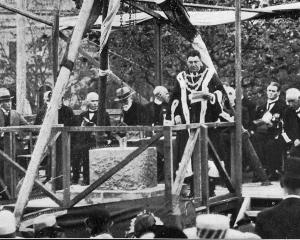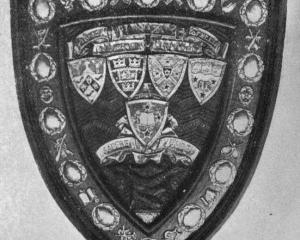The standard weight hitherto was 2oz (56.7 grams), and when it was proposed to raise it by 1/2oz more it was strongly objected to by one delegate that a 2 1/2oz egg was too much to expect of a hen, which was under a presumptive duty to lay 200 eggs in a season.
Better, he said, to have a lot of fair-sized eggs than a less number of big ones.
Another delegate replied that the objector would probably expect top price for the smaller egg.
Mr Merrett, secretary of the association, said that last year the standard was increased from 1 3/4oz to 2oz, and it was only left at that because it was felt that too large an increase at one time was inadvisable.
He argued that the grading of all New Zealand products had an upward tendency, and the larger egg was sure to command a better price in the market.
It was finally decided that the weight should be 2oz, as before.
The official standard for grading purposes is now as follows: - Size of air-cell (not to be dried down), 40 points; weight of egg (2oz standard), 20 points; texture of shell (smooth and thick throughout), 15 points; colour of yolk (deep orange), 5 points; consistency of albumen (not watery), 5 points; uniformity, 5 points; shape, 5 points; clean shells (washing undesirable), 5 points; total 100 points.
Serious defects are specified as blood spots and stains, cloudy yolks, developed germs, adhesions of yolk to shells, and malformations.
• Steady progress is being made with the reclamation of Lake Logan, which is already reduced in area by a very considerable extent.
Several acres of more or less dry land are to be seen along the shore of the lake, near the Logan's Point quarry, and owing to the shallow depth of water in that locality the filling-in process is correspondingly rapid.
The structures erected for the defunct model yacht club are now being dismantled.
Many people view the transformation that is taking place with rather mixed feelings, due largely to old associations, no doubt, but it is nevertheless true the improvements already effected in the vicinity of Pelichet Bay have gone far towards removing the causes for complaint regarding the unsightly approach to the city by train from the north.
• The British War Office makes it clear that New Zealand mutton is not specially discriminated against in the food contracts (says our London correspondent).
The discontinuance of the army contracts for mutton, it says, is due to the fact that the British soldier prefers beef to mutton.
The authorities have deferred to this preference.
The limitation applied to mutton from all sources, and is in no way to be construed as a reflection on the quality of the mutton coming from New Zealand.
The Pall Mall says facetiously: ''The New Zealand High Commissioner cannot believe that the British soldier rejects the excellent frozen mutton which comes from his dominion.
"But so it is, and the distaste applied not merely to the frozen species, but to the whole commodity - British or foreign. Some of these gregarious aversions are very mysterious. Why will not servants eat game, and why will not Scotsmen eat eels?
"There is room for a systematic study of our table taboos.''
• The establishment of a Chair of Journalism at Sydney University was foreshadowed by the State Minister for Education last week.
Mr Carmichael ... saw no reason why the 300,000 school children of New South Wales should not be encouraged to enter the profession of journalism. - ODT, 23.4.1914.
• COPIES OF PICTURE AVAILABLE FROM ODT FRONT OFFICE, LOWER STUART ST, OR WWW.OTAGOIMAGES.CO.NZ












